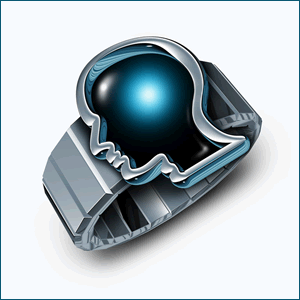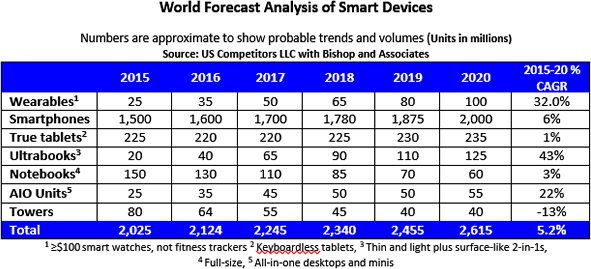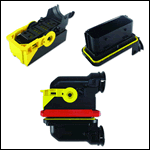Convergence of Smart Computing Device Markets
Once distinct markets, wearables, smartphones, and tablets are merging into one product segment. What does the future hold for these devices and related technologies?
 The smart computing device market includes wearables, smartphones, tablets, and laptops. One can define this segment as a market because these previously distinct product areas are converging – and not with the same gusto as we experienced in the recent past. Have we hit a watershed?
The smart computing device market includes wearables, smartphones, tablets, and laptops. One can define this segment as a market because these previously distinct product areas are converging – and not with the same gusto as we experienced in the recent past. Have we hit a watershed?
It is amazing that some devices that were runaway successes are now paying the piper. Is it temporary, or does it signal a sea change in market dynamics? Is it possible that all that has been invented, with perhaps the exception of wearable devices, is basically all there is? Is the rash of innovation over because there is nothing left to invent?
The answer is…yes and no.
Perhaps least affected so far is Apple, with continued strong iPhone sales. Why? That’s complicated, but let’s just call it exquisite product differentiation. It has allowed Apple to command prices almost double those of Android phones, which fall to the bottom line and allow Apple to spend freely on new innovations.
Let’s say smartphones are still the wonder of the world; putting them in the hands of everybody will be a challenge. Coveted emerging-country demand will be targeted but somewhat muted by phone costs and wireless availability. Lower-end phones, without all the bells and whistles, will alleviate that. Such smartphones from China and India are already doing so, and giving Samsung some low-cost Android competition.
There is also the pushback against millions of people walking or driving around attached to their phones. You wonder if the phone or person is in charge and whether the current Millennial generation will ever grow out of it. You know all the talk about robots taking over? Well, maybe they already have.
In the overall smart computing device market space there are some warning signs:
- Rapidly maturing market segments
- Digital convergence creating internecine competition between devices
- Market saturation in some areas
- Longer replacement cycles on non-subsidized products such as tablets and PCs (Windows XP anyone?)
- No breakthrough technology, just attractive product improvements
Having said that, these markets include world-beating products that keep getting better; there are rather compelling improvements for those of us who value the newest technology.
Here is a rundown of what we see happening:
- Desktop PCs are in decline and will drop from 140 million units in 2010 to 80 million in 2015 and 40 million in 2020. (That is a major hit to the proverbial motherboards chock full of connectors and sockets.)
- All-in-one units have smaller/thinner main boards designed for each unit that are no longer quasi-standard.
- All-in-one units are refreshing and on the rise but not enough are being sold to offset decline in towers.
- Full-size notebooks are weakening due to sub-notebook popularity and computing power. (Apple may be bucking this trend to some extent.)
- Ultrabooks and Windows convertible tablets are on the rise due to compact size and power. Many also work as tablets with Microsoft’s touch technology.
- True tablets, such as the iPad, have hit a speed bump, which may be saturation.
- Smartphone demand is ratcheting down from high double to single digits.
- Asian growth markets will be impacted by China’s investment bubble.
- Internal connector counts are flat-to-down due to higher levels of integration and packaging challenges.
- The number of I/O connectors is on the decrease, yet there is some “microvation” of connector content.
- The overall future to 2020 appears slow – about 5-6% per year unit growth – with a possible down side due primarily to price erosion in maturing and emerging markets.

Current industry projections are influenced by current results. The one area that is bullish is wearables. We are including only smart watches that pair with a smartphone or tablet. Fitness devices would increase this volume. We also feel the following is at work:
- Smart watches are off to a tepid start (Apple’s iWatch is exquisite but has sticker shock for most). The idea of wearables will catch on with future improvements and unknown breakthroughs that will make them compelling devices. They will need waterproof cases, at least one full day of battery power, and seamless connectivity to smartphones, tablets, or PCs.
- Lower-cost phones and tablets designed for emerging markets will buoy their growth at much lower ASPs.
- Product extensions and apps still have a long way to go and will increase via vertical market activities in business, transportation, healthcare, and other unique market applications.
- The smartphone is the best invention of the millennium. It has staying power for the next decade.
- Tablets’ current speed bump could be overcome with ubiquitous, license-free, non-cable HD video access; design and 4K/3D display improvements; and voice/data subscriptions as available in the smartphone market.
- The PC and its technology offshoots were the best inventions of the 20th century and are ubiquitous in society today. They still are the best computing and desktop publishing appliances and will remain so for years to come.
- The business/scientific and SOHO markets for PCs should also come back, perhaps with better regional GDP growth.
- The somewhat fickle consumer market is the wild card for the tablet and PC markets.
- Sadly, our beloved motherboard is showing its age, but will hang around for businesses, industry, and hardware enthusiasts, with all that connectivity.
Results for this segment will be mixed and will require economically healthy, growing markets to offset a reduction in PCs and their sockets, I/O interfaces, and separable, discrete connector products. Perhaps some companies could have, should have, or will have to expand their product lines with micro-packaging-related technologies necessary for future interconnect applications. Some have de-emphasized these high-volume, low-cost markets, perhaps at their peril. HVM is the foundation for cost-efficient production, allowing many spinoffs to higher-valued, more specialized applications.
- Electric Vehicles Move into the Mainstream with New EV Battery Technologies - September 7, 2021
- The Dynamic Server Market Reflects Ongoing Innovation in Computing - June 1, 2021
- The Electronics Industry Starts to Ease Out of China - November 3, 2020






